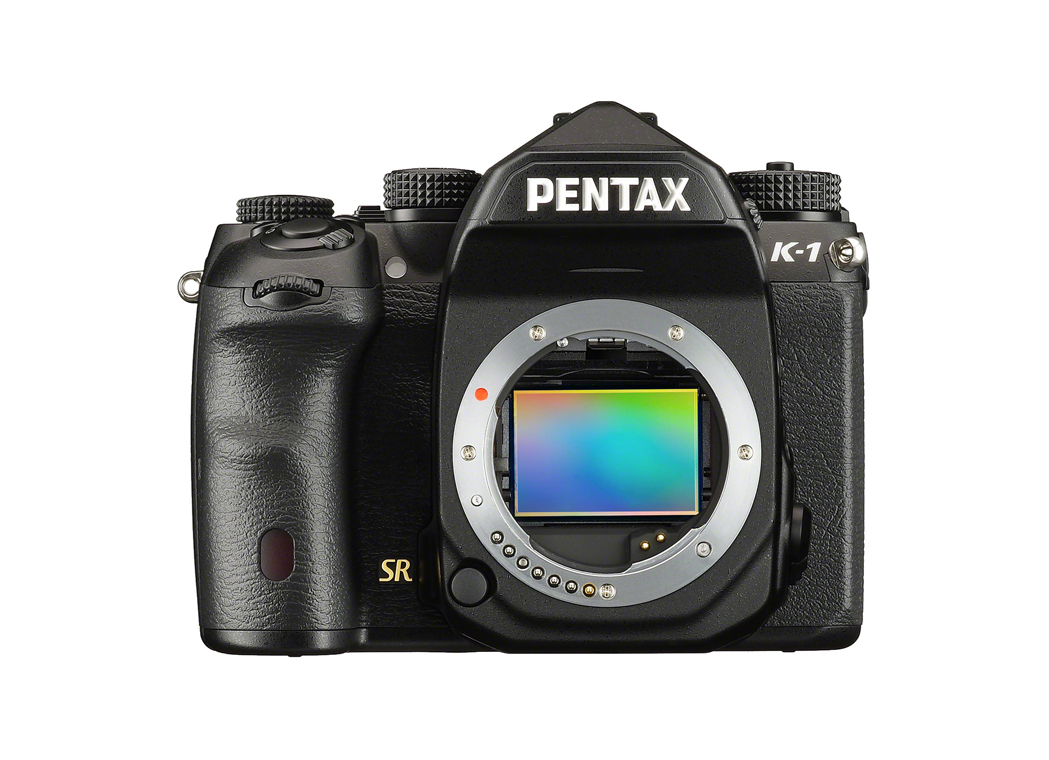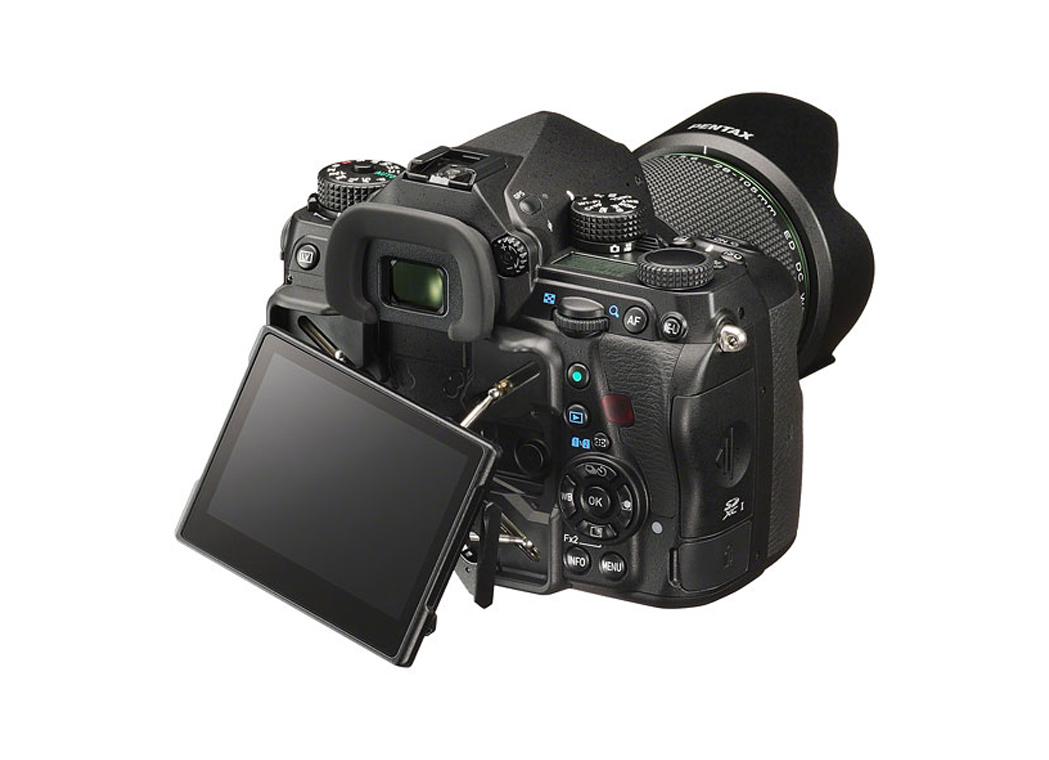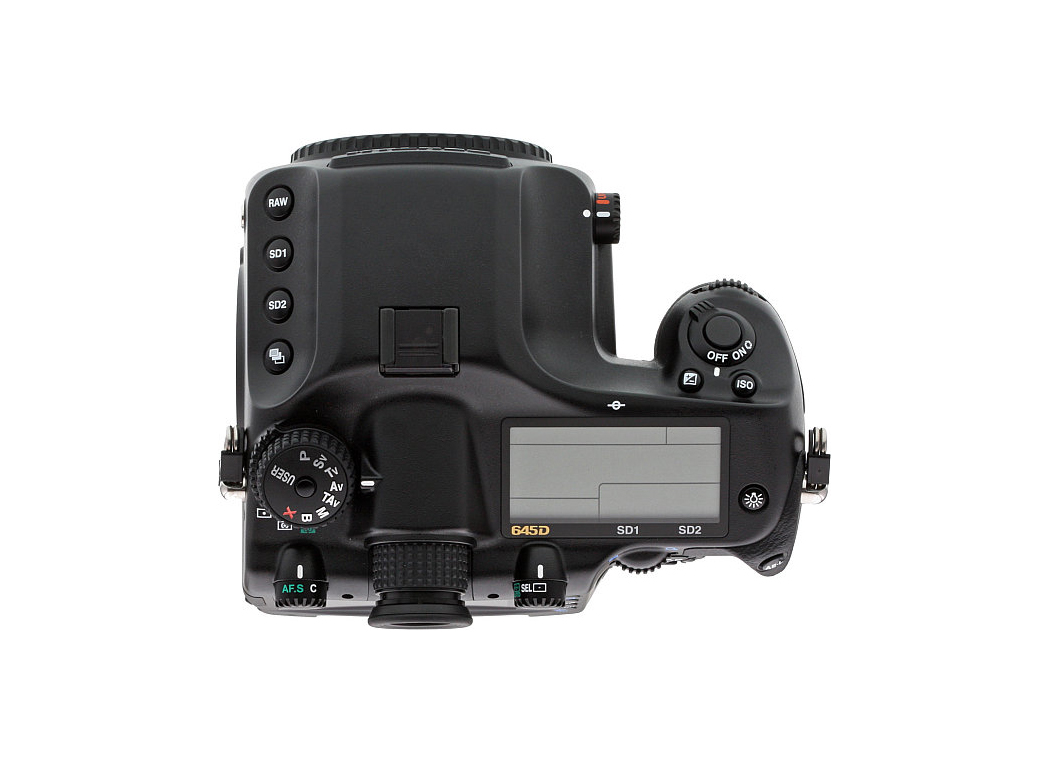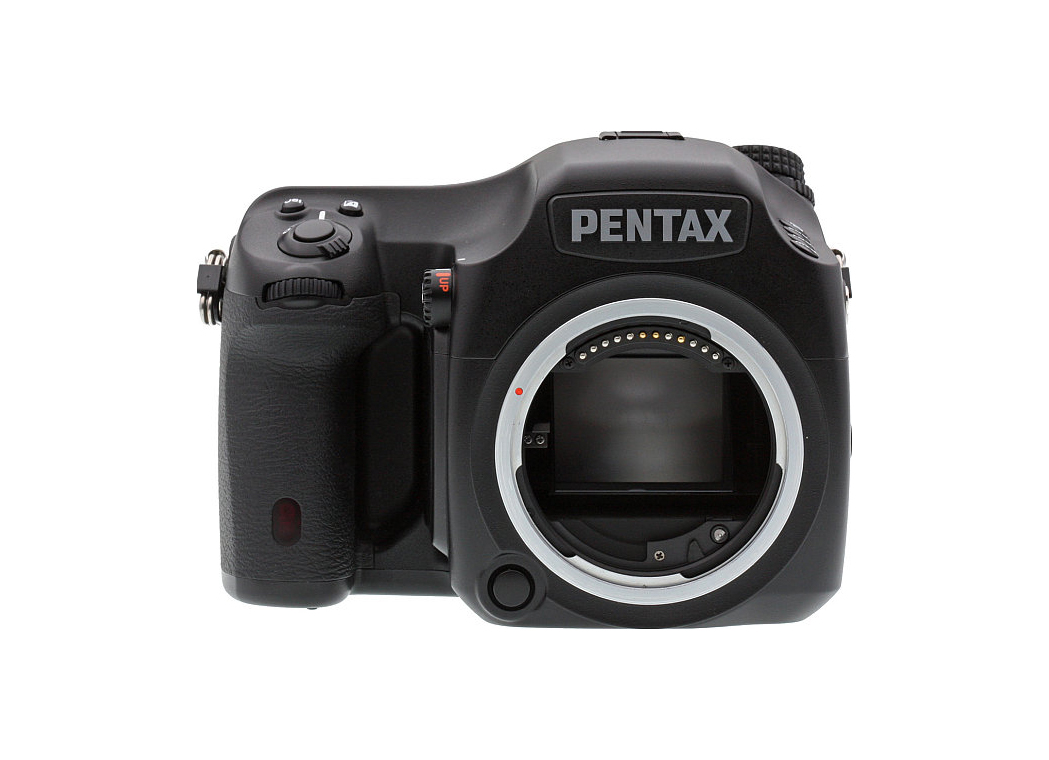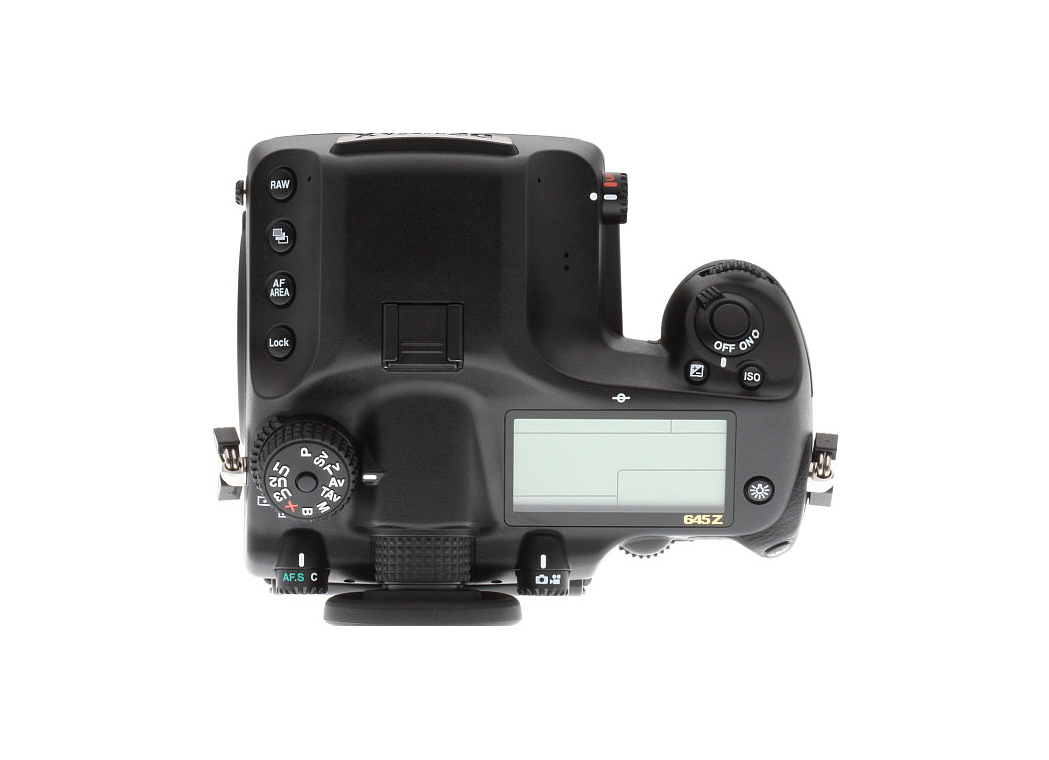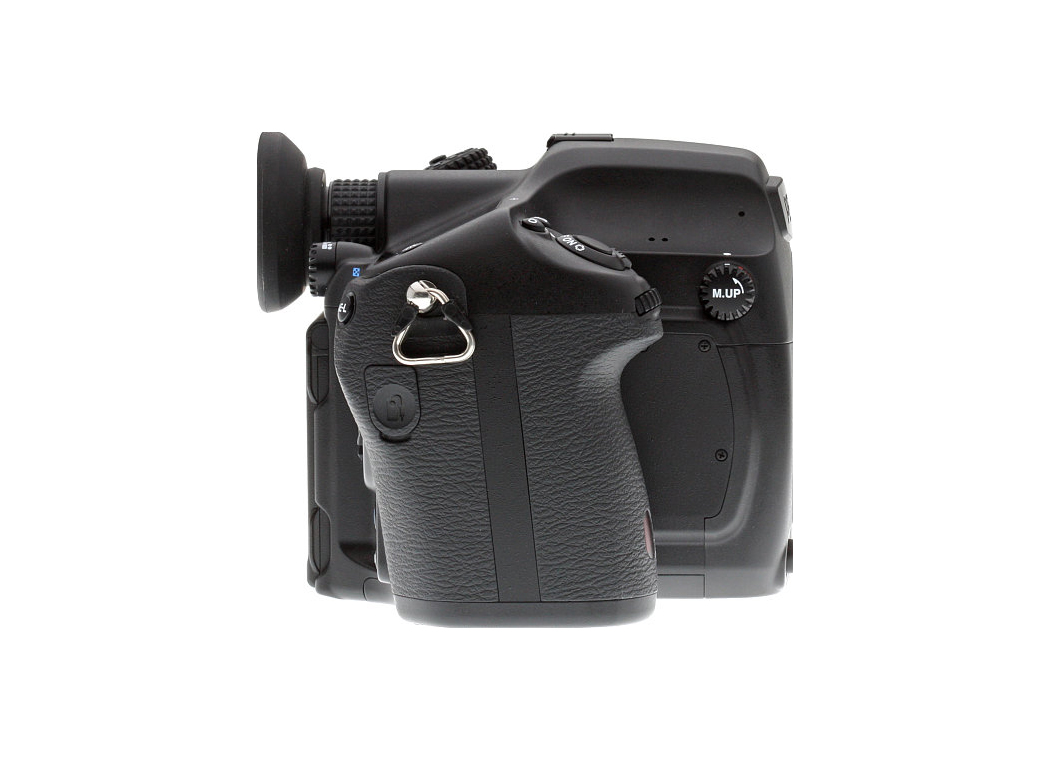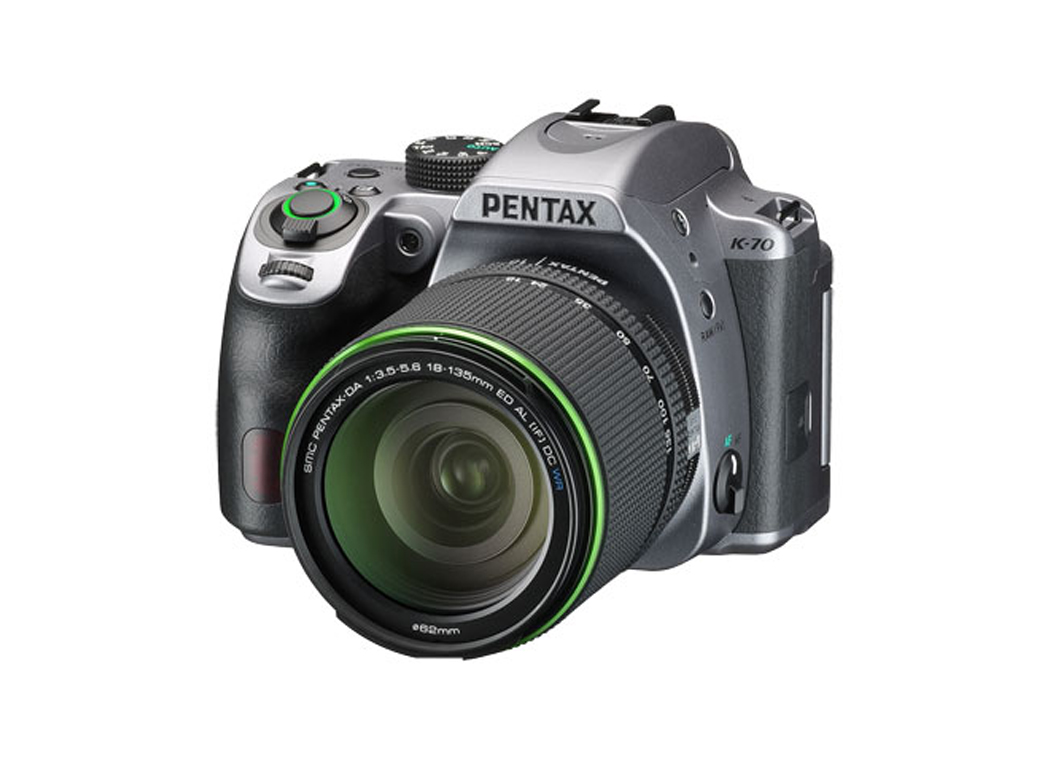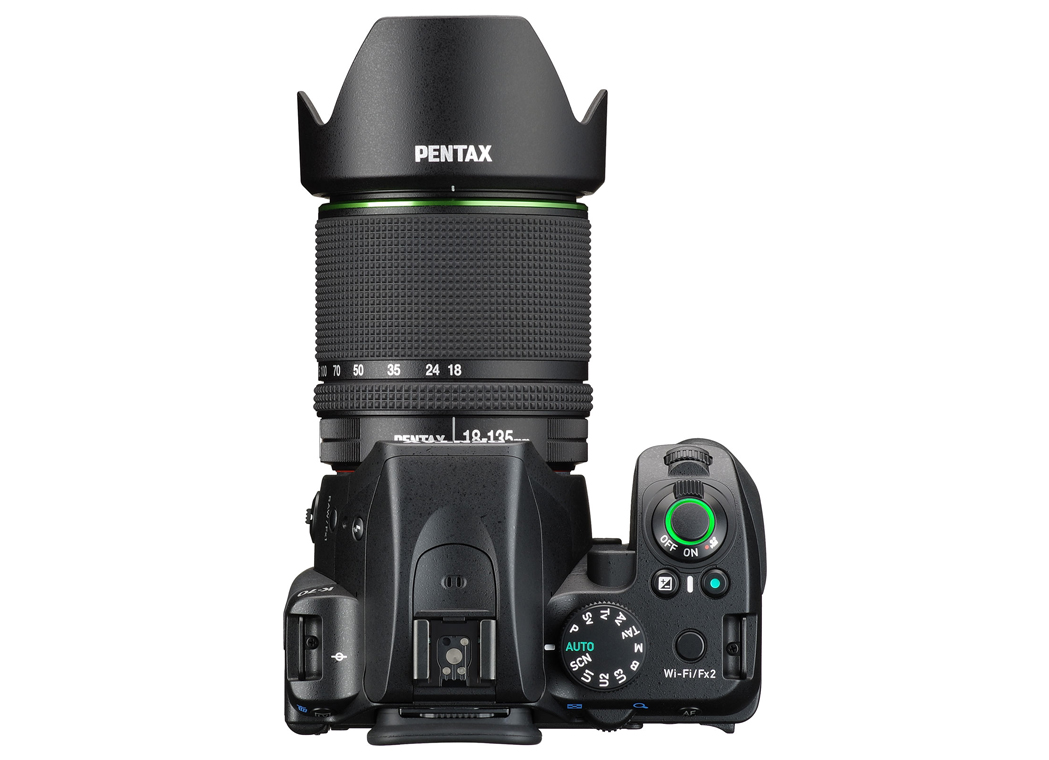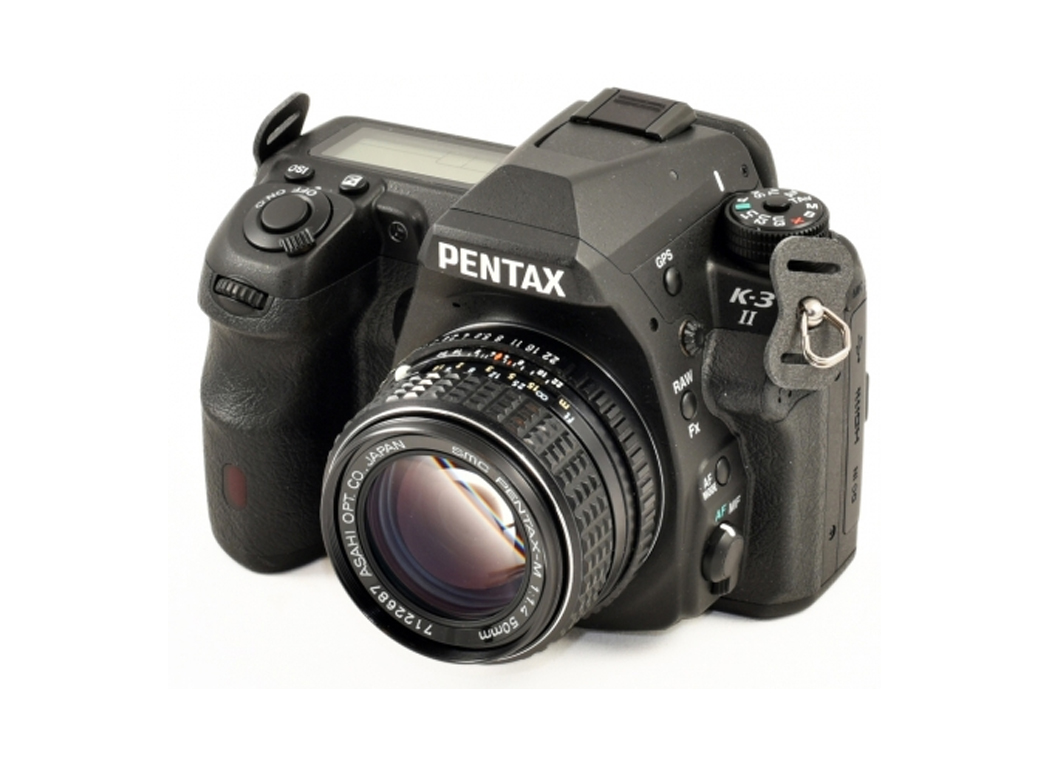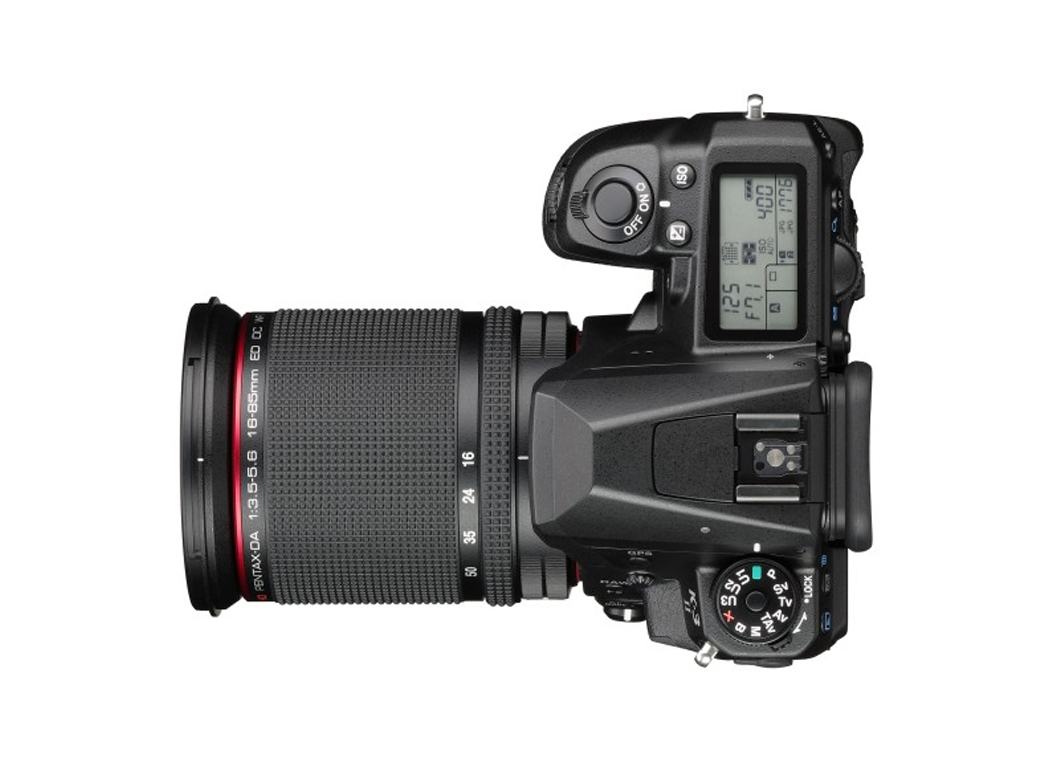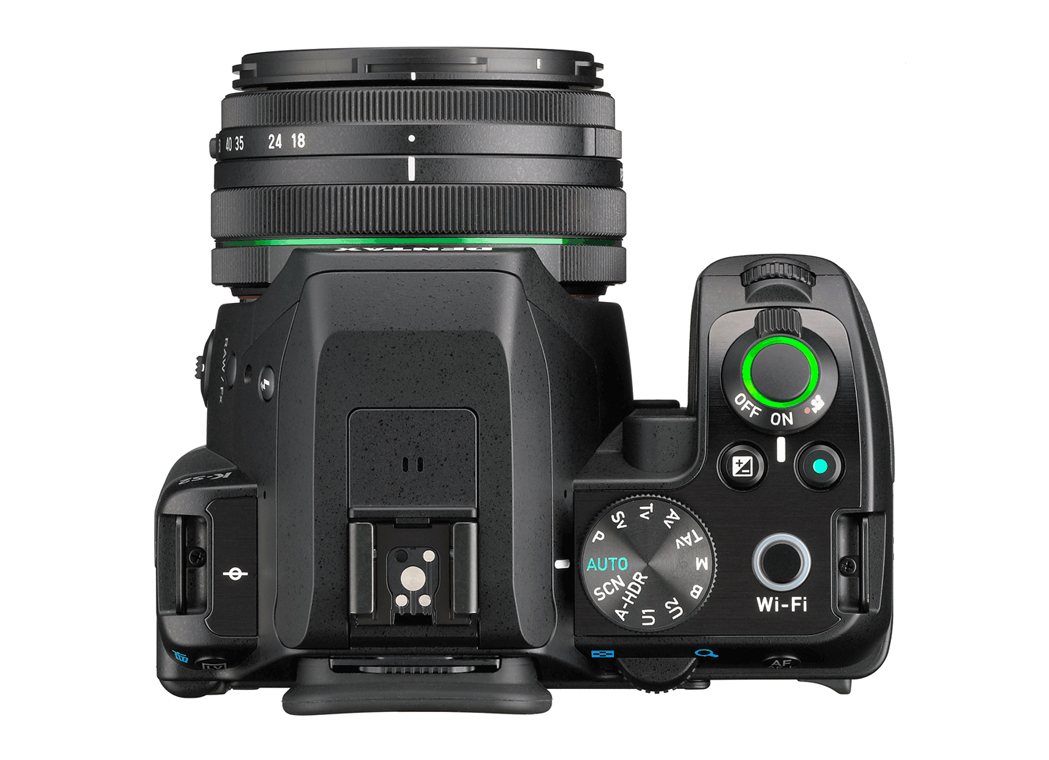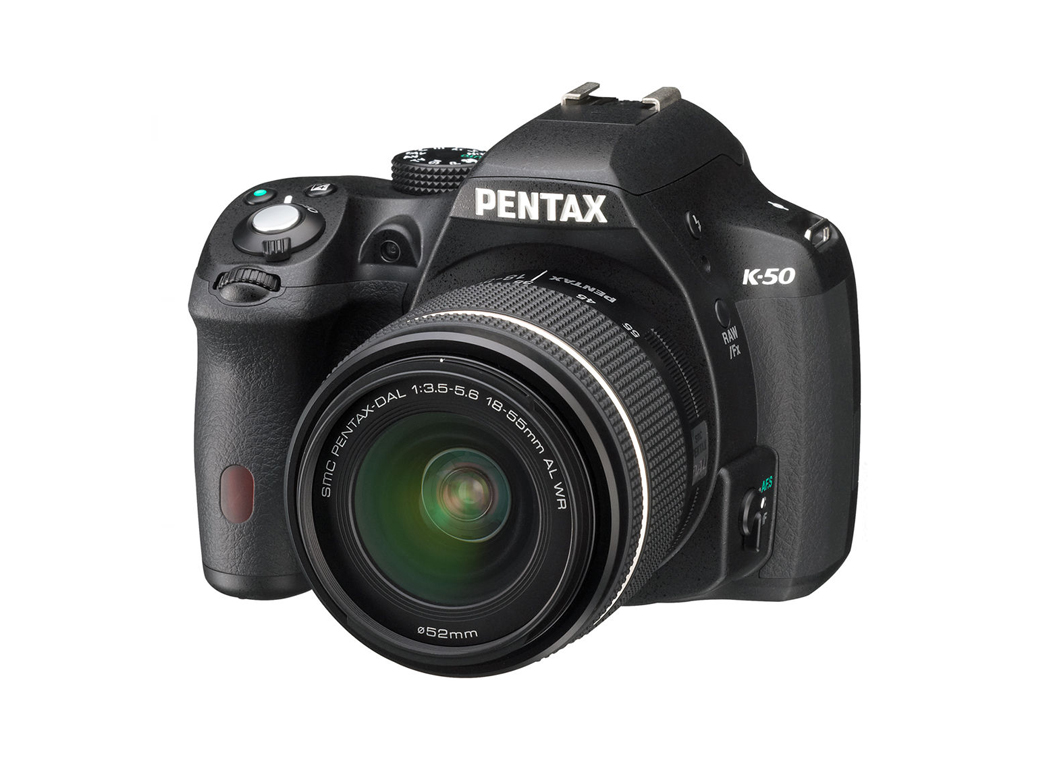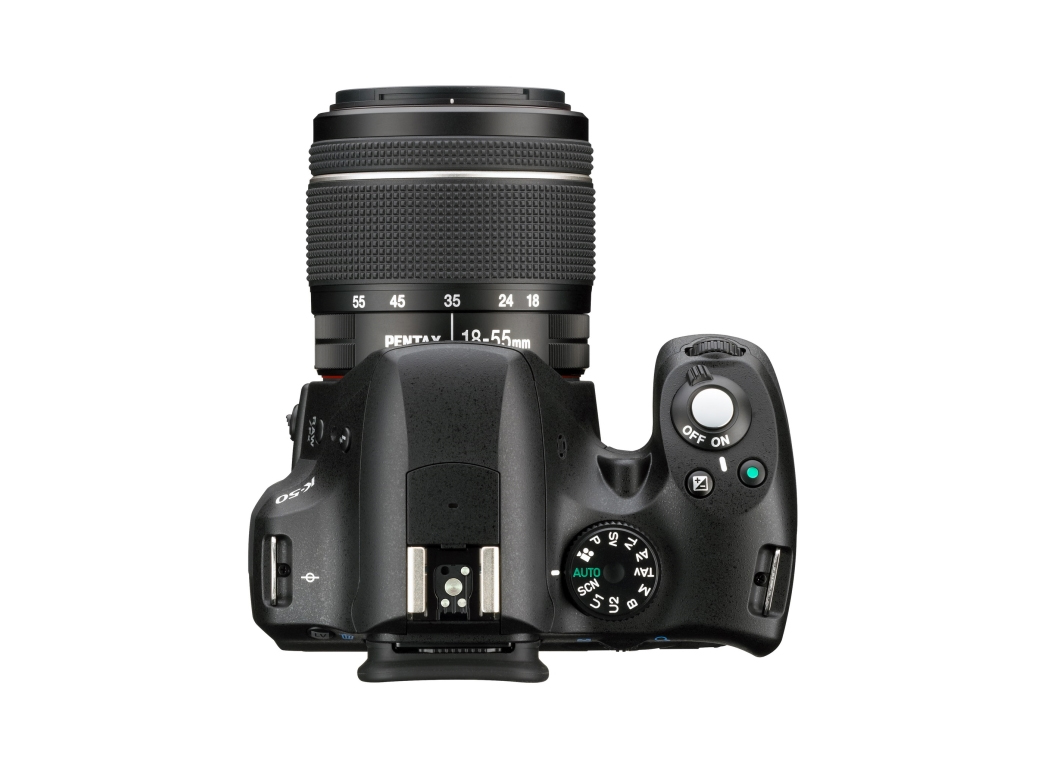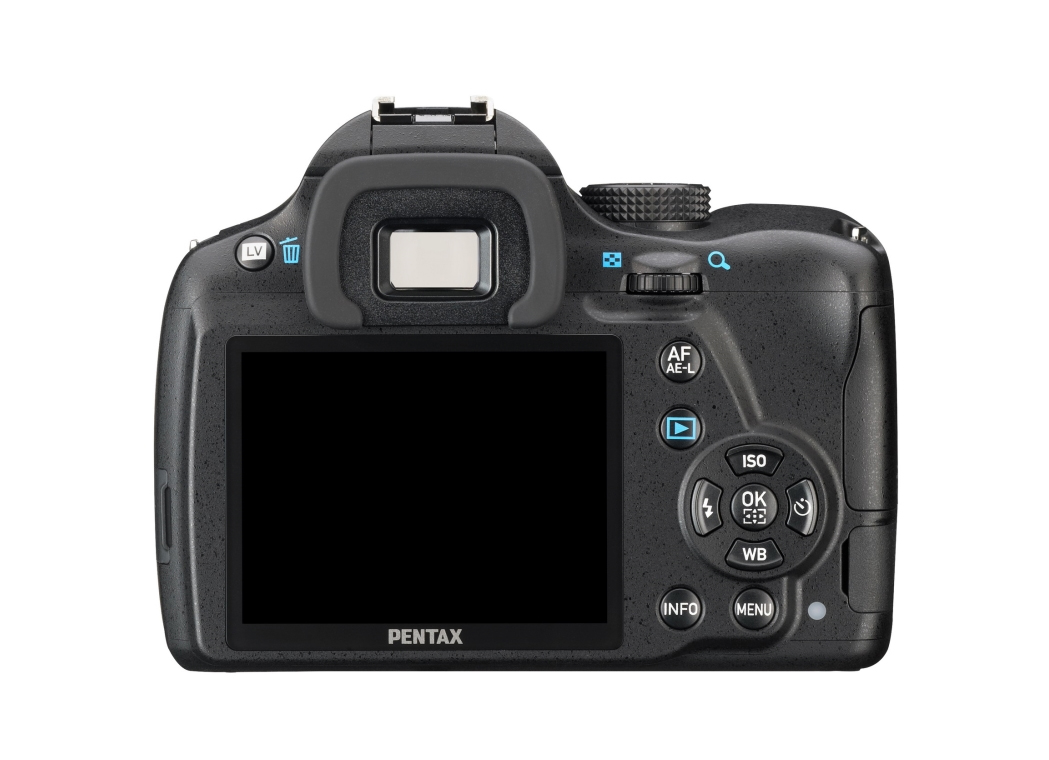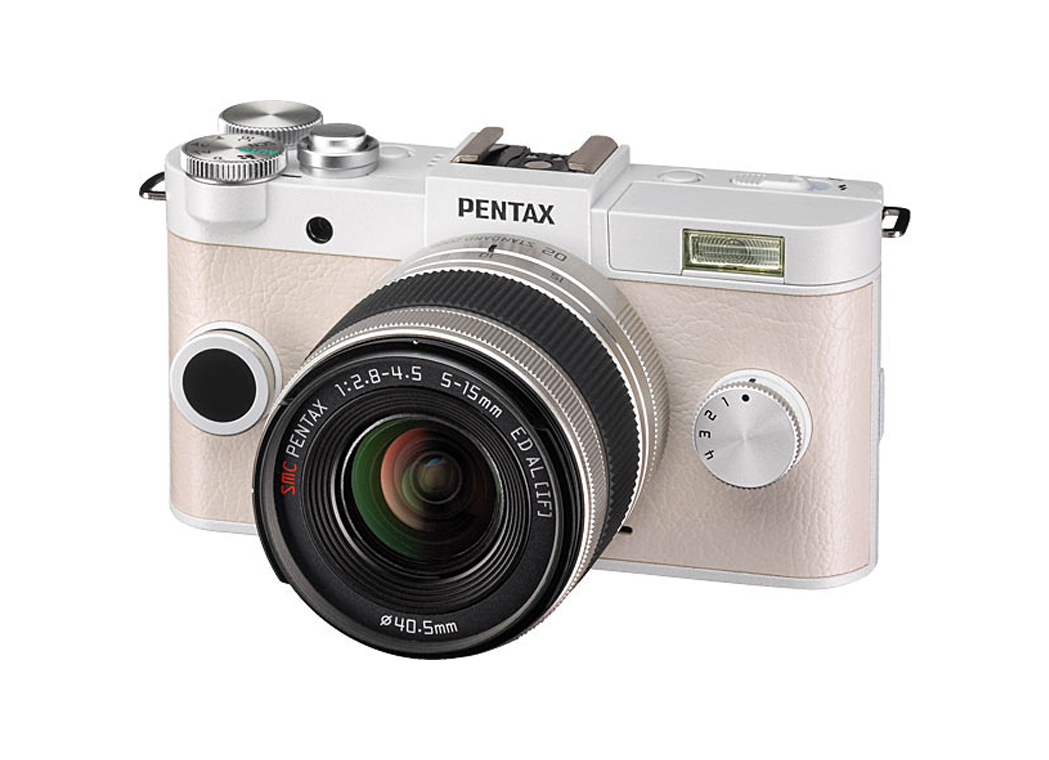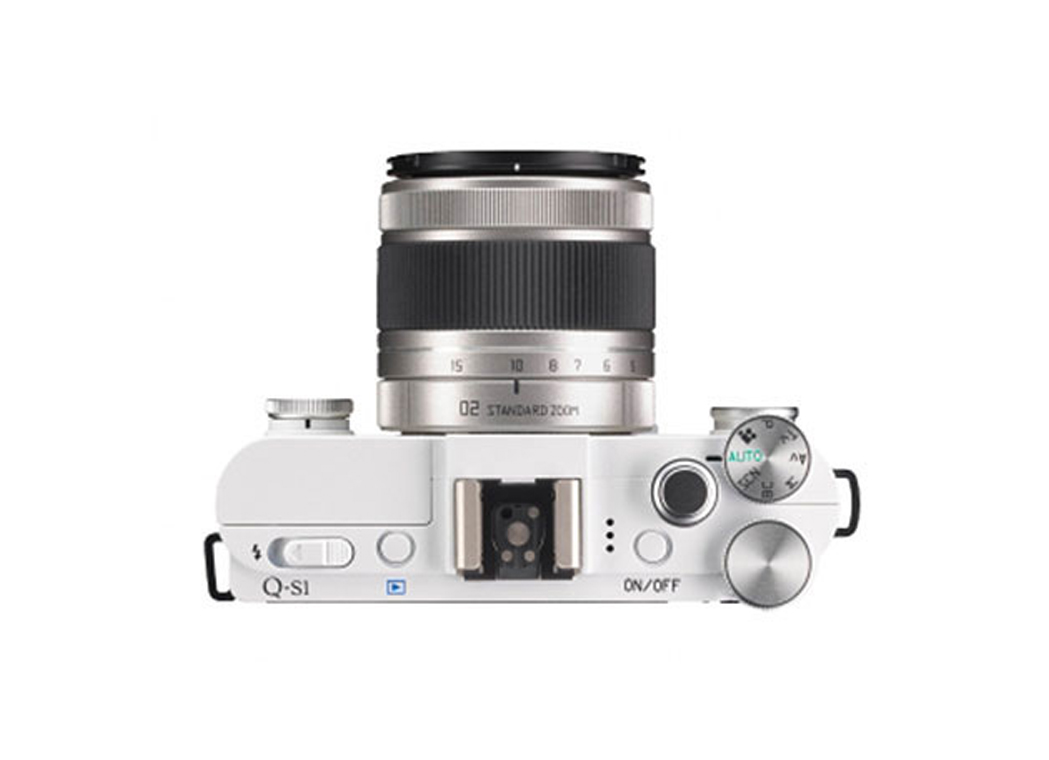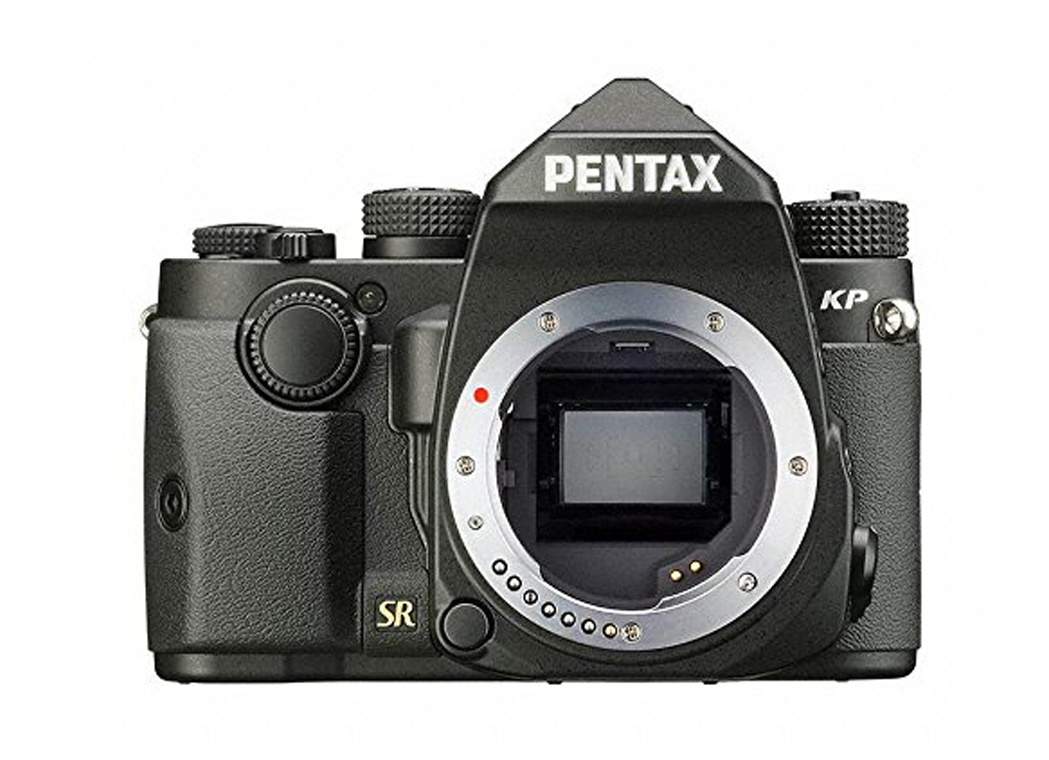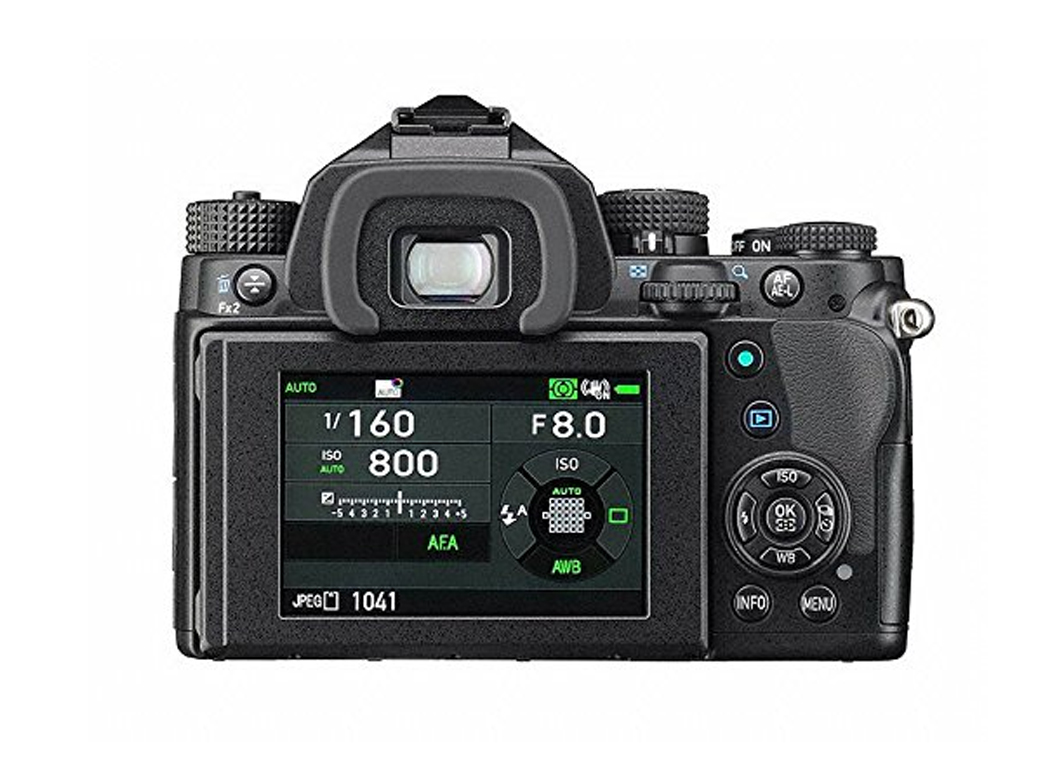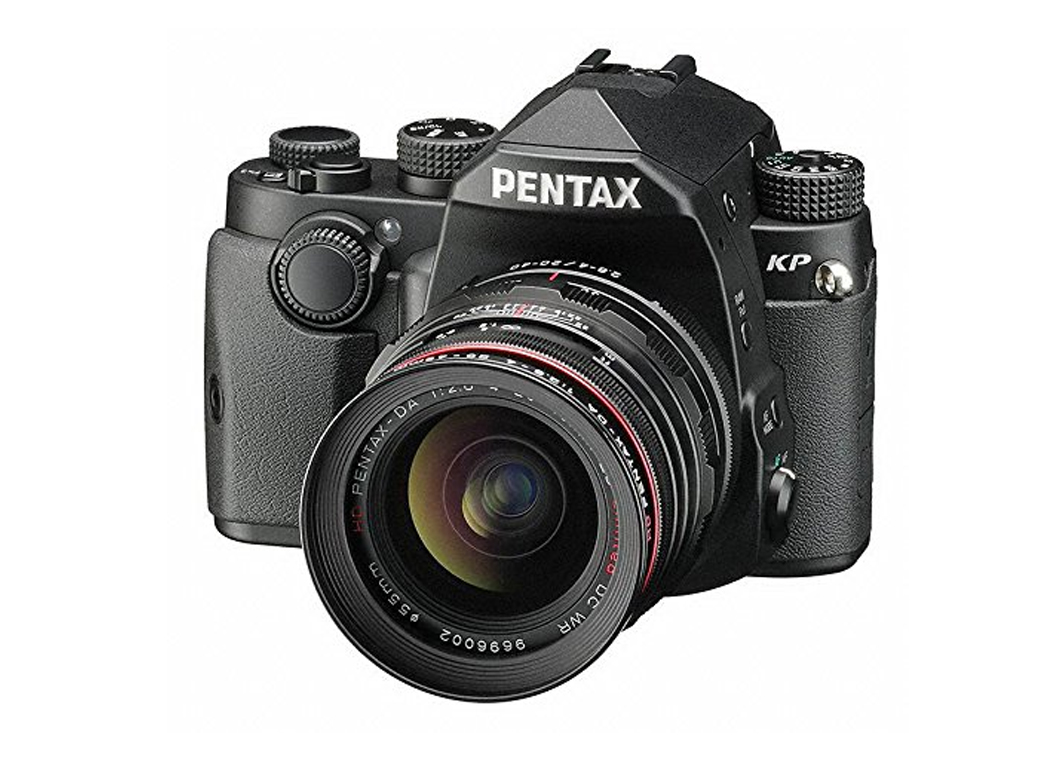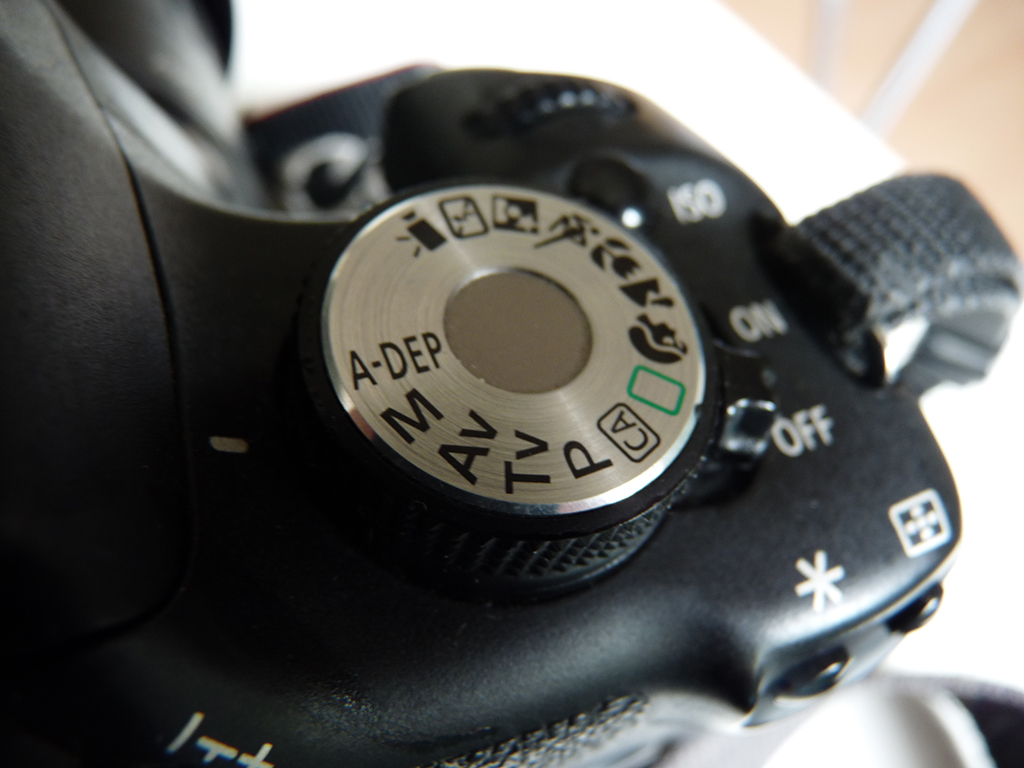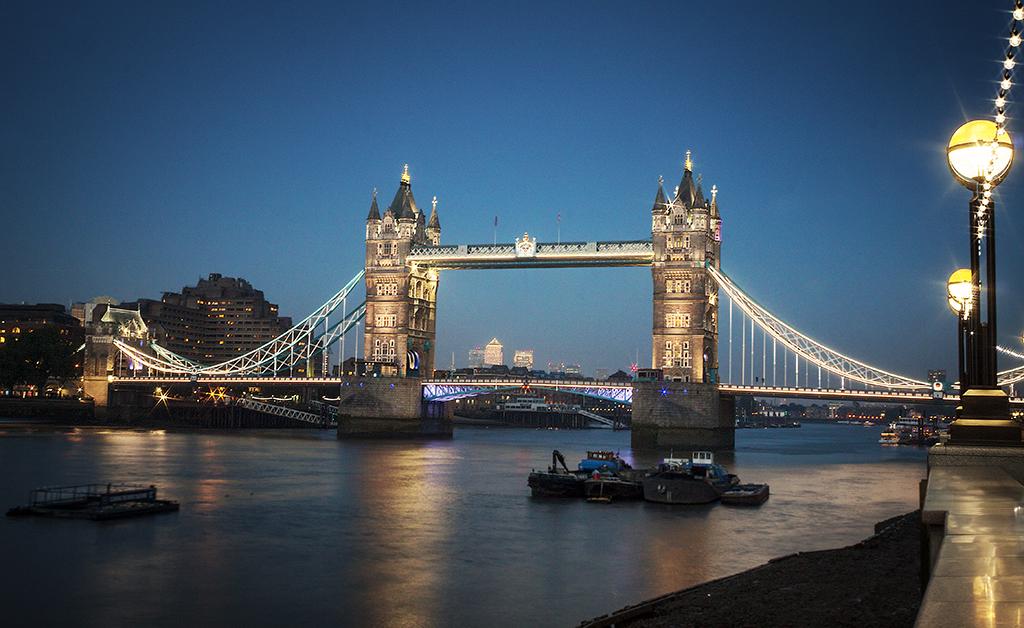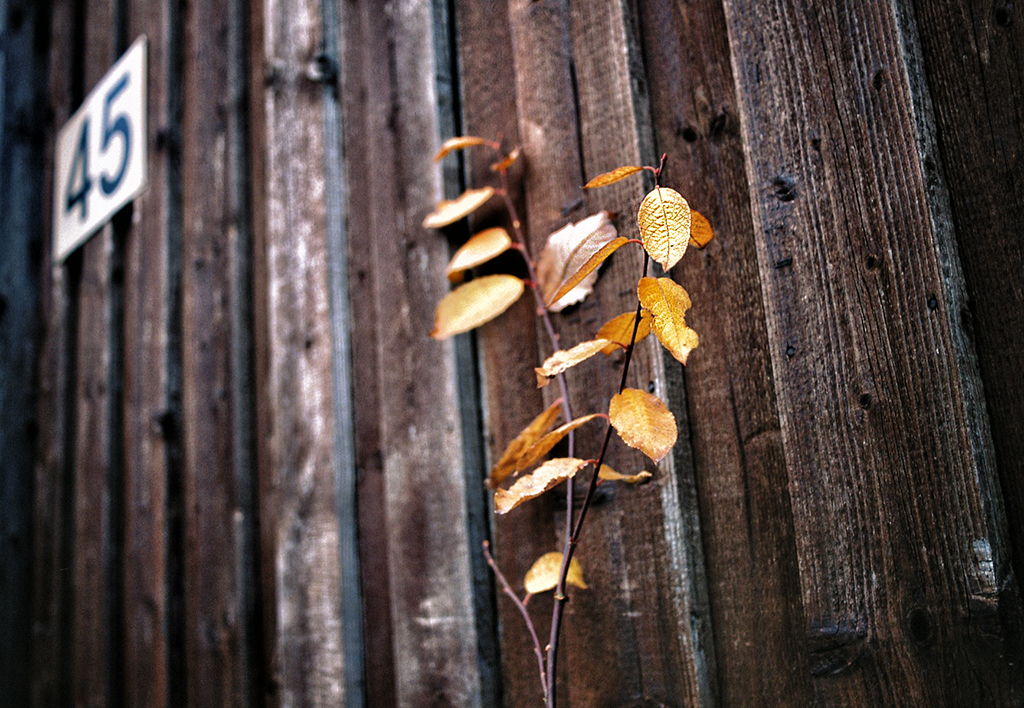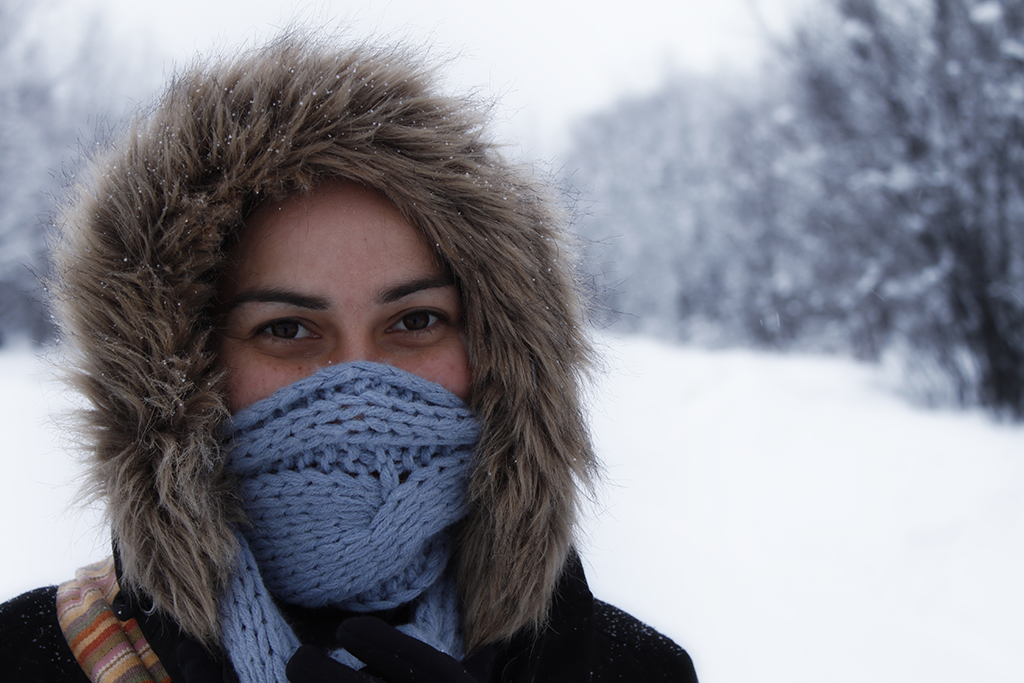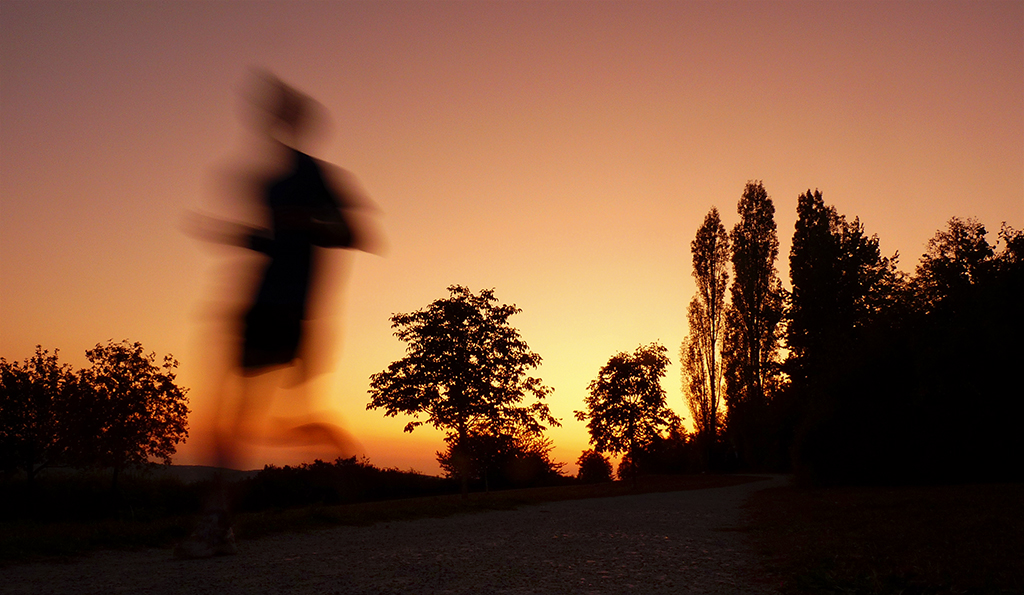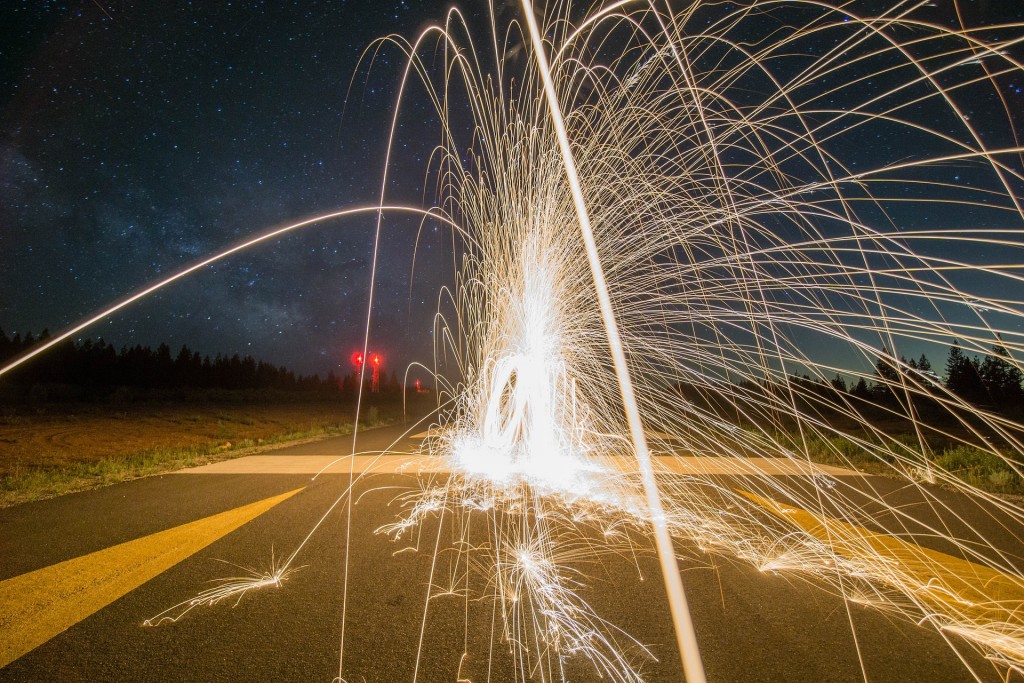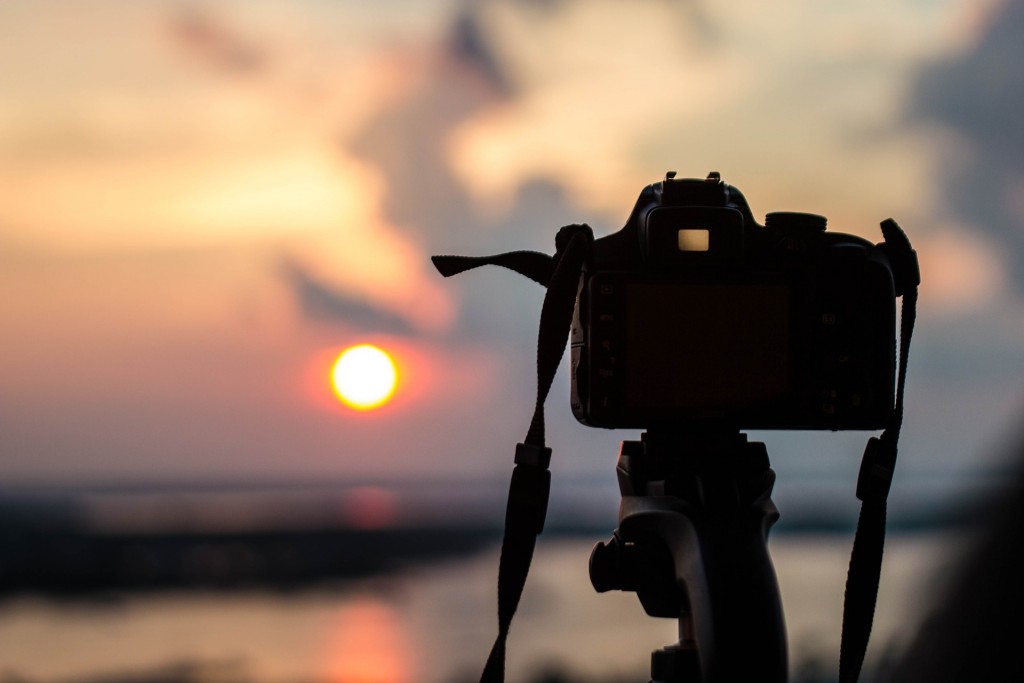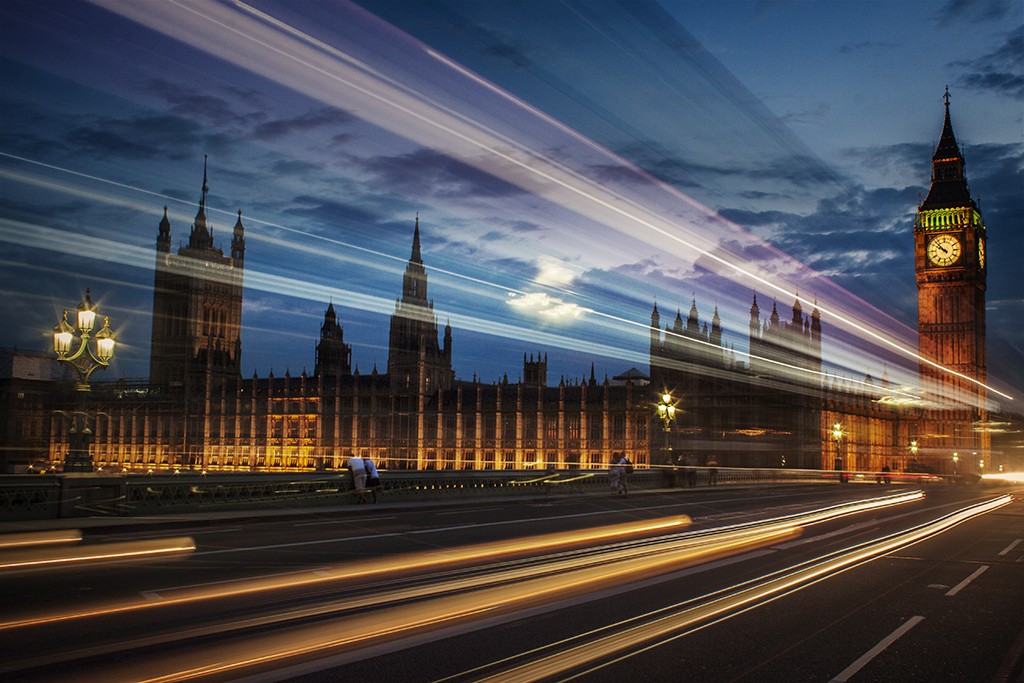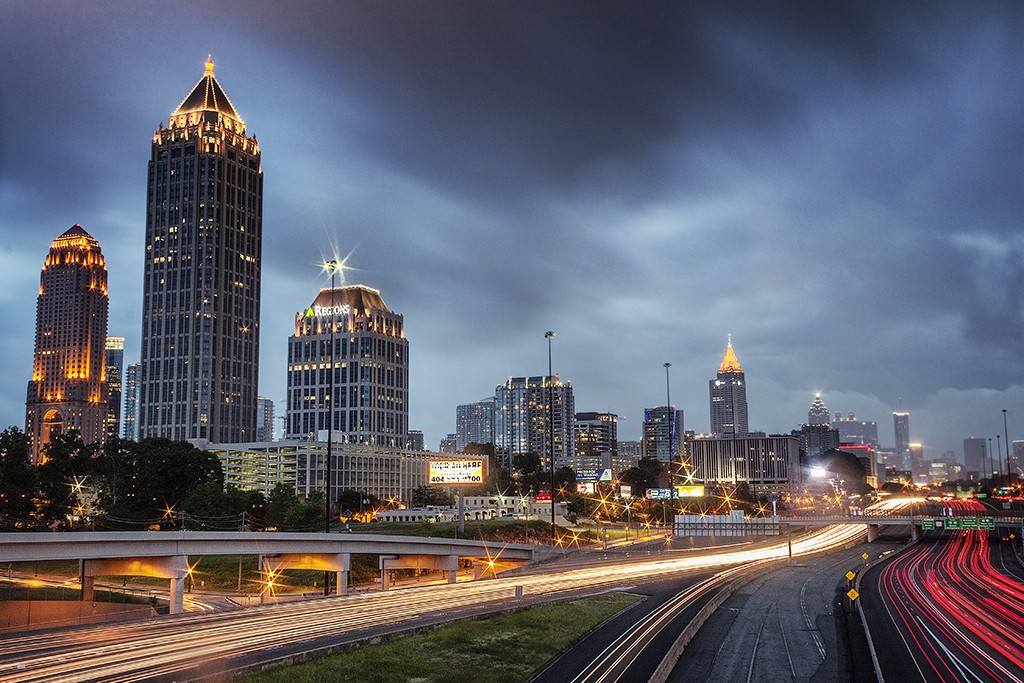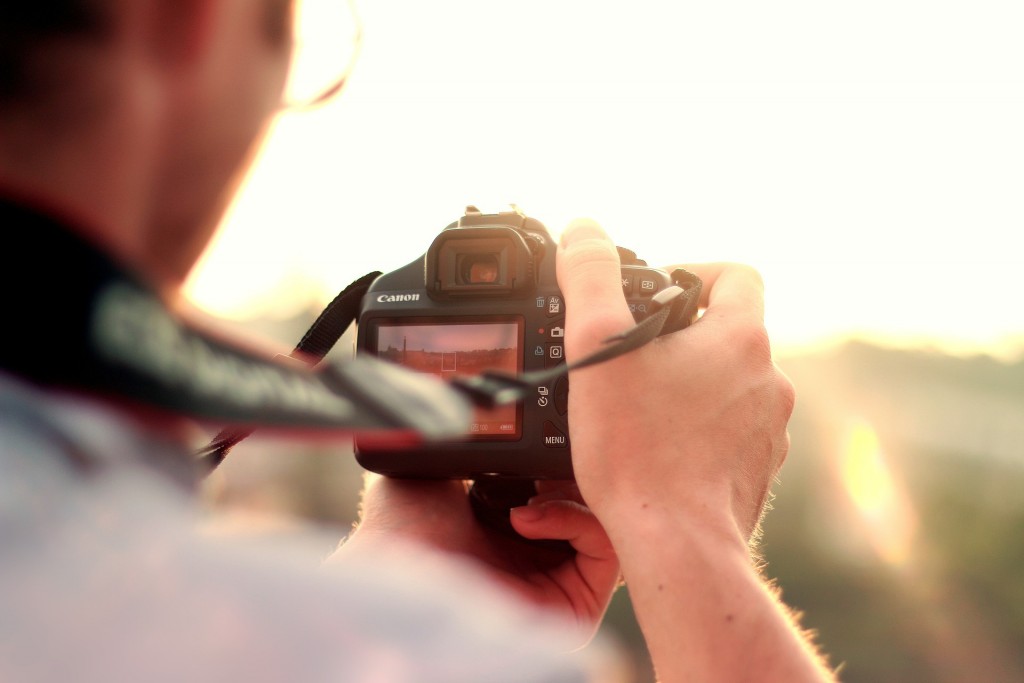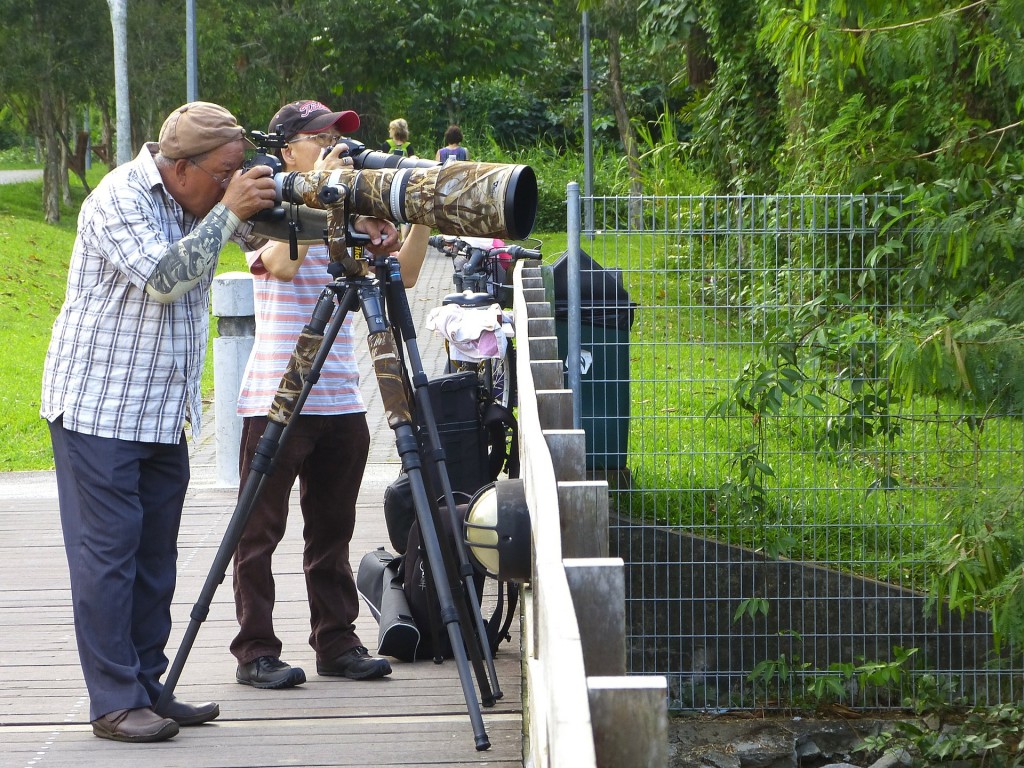Well, here we are, it’s time to talk about Pentax. I’m sure it’s a brand name that everyone with any knowledge of photography has heard of but it’s still not nearly as popular these days as some other brands. Some may believe that they have nothing compelling to offer over the competition, others may only remember it as a relic from the past and leave it there and some just don’t care at all and have grown to like the most popular brands and stick with them. The aim of this article is to prove that Pentax is still alive and kicking and that they still possess the tools to make their mark on today’s market.
Best 8 Pentax Cameras
- Ergonomic Design
- Improved ISO
- WiFi capable
- Great image quality
- Pricey
- Slower than other models of the brand
- Small LCD display
- Limited number of lenses available
The camera features a magnesium alloy body and it’s comprehensively sealed. However, despite the many top of the range features, the camera is available at a relatively low price which makes it a great deal to consider. Other features offered by this full-frame DSLR cam include 5-axis image stabilization, 33-point AF system, 100 percent penta-prism viewfinder that has 0.7x magnification, 1/200 flash synchronization speed and AA filter simulation among others.
The Pentax K-1 DSLR camera has a built-in GPS with Astrotracer function and electro-magnetic compass, Wi-Fi and 6.5 fps when in Advanced Photo System type-C crop mode (4.4 fps continuous shooting). K-I also has a lock button, a new feature that helps to lock different dials and control buttons temporarily. Can shoot full HD 1080 videos at a speed of 30 per second.
Flexible and user-friendly
If you are familiar with the K-3 II camera, you will find a lot of similarities especially when it comes to the outward construction. However, the Pentax K-1 is much heavier (1010 grams) when without a memory card or battery and also has bigger dimensions (110(Height) x 136.5(Width) x 85.5(Depth). It is therefore the largest in the family or Pentax DSLR cameras so far.
The DSLR camera is also resistant to dust, water and cold as it is built with 87 special sealing system. It can be used under temperatures reaching -10°C. The K-1’s core photographic capabilities are a noteworthy feature which previous Pentax camera users will find irresistible. The camera has a number of time lapse options and exposure modes but the image mobilization, high resolution sensor, large viewfinder and well positioned dials definitely do stands out when it comes to the functionality. If you are after quality images and ease of use, the Pentax K-1 is the camera to beat.
Dustproof, weather resistant and cold-resistant construction will ensure us the versatility of applications, and can operate at temperatures of up to -10 degrees Celsius.
- Ideal for Landscape Photography
- 40mpx Resolution Sensor
- Dual SDHC card slots
- Comfortable controls
- Really Expensive
- Issues with Aliasing
- Produces very large sized RAW Files
It is however worth noting that this system like a DSLR uses a vertical-run shutter thus denying you the higher flash sync which is achievable with leaf shutters from many other cameras within the competing range. With the CCD sensor, Pentax 645D has an output of 7264×5440 pixels which are captured in 14-bit Raw or JPEG. The camera has a dimension of 44 by 33mm thus making it 1.7 times bigger than the full-frame (35mm) sensors and smaller than the actual 6 by 4.5cm frames. The 645D’s lens has a crop factor of 0.79x.
Ease of use
As with Pentax DSLRs, the 645D has a Prime Engine II processor which provides a conventional ISO 100-1600 range. The model has a 77-segment metering system plus it gives users a choice of partial, spot and evaluation modes, as well as +/-5EV exposure compensation. Another noteworthy feature you get from the model is the new SAFOX IX+ autofocus that offers 11 optional AF points out of which nine are cross-type sensors.
There are many different presets for white balance plus color temperature and manual settings, all with alteration. There is an array of options for the shooting mode with PSAM complemented by a Bulb mode, shutter and Aperture (Tav), sensitivity, user settings and flash sync. On the rear of the camera you’ll find a green button which allows for quick auto setting by pressing once. The Dynamic expansion, in-camera HDR settings and a succession of digital filters are easily accessible from the menus.
Another advantageous feature found in the Pentax 645D is a much larger viewfinder (compared to DSLRs) which makes manual focusing much easier. It also has a 3-inch LCD rear screen with 921k-pixel resolution for displaying digital level or shooting information.
- Impressive 51.4mpx Sensor
- Tiltable LCD monitor
- Full HD and 4K Video Compatible
- Medium Format DSLR camera
- Weather Sealed Body
- Amazingly Expensive
But while the 645D employed a CCD sensor, the new model has employed a CMOS sensor which is a technology worth noting in addition to the resolution increase. This means that photographers will enjoy the advantage of increased sensitivity up to ISO 100-204,800 from the ISO 100-1600 offered by the 645D. This admirable increase makes the Pentax 645Z much more resourceful while making it ideal not only for landscape and studio photography but also for other types of photography.
The 645Z sensor can capture videos at a resolution of 1920 by 1080 pixels in Full HD at either 24p, 30p or 60i frames per second. The camera doesn’t have AA filter thus making it possible to capture the maximum resolution from the sensor. AA filter simulator feature offered by the camera can however be used in case moiré patterning does become an issue.
The 51.4-million-pixel sensor uses a 3.2-inch, 1.04-million-dot LCD Screen which can be tilted for greater usability thus making it a great tool for landscape images especially when partnered with the live view. When the camera is used with 75mm lens, the magnification of the optical viewfinder reaches 0.85x with 98% view field.
The camera is compatible with Flucards which offer Wi-Fi connectivity thus supporting large image transfer and remote camera control as well. Pentax 645Z has a weather sealed construction thus making it a good investment especially if you are a field photographer. With 14-bit RAW files, the camera is a real deal especially when it comes to potential image malleability during post processing.
- WiFi capable
- Image stabilization
- Articulating Screen
- Anti-Aliasing filter simulator
- External microphone port
- Low battery life
- Heavy body
- No touchscreen
One of the selling points of the K-70 is its weather-sealed body which has large optical viewfinder plus a 3-inch fully clear LCD offering night vision operation for astrophotography. The K-70 has integrated Wi-Fi and can capture full HD videos 1080p/30p. The DSLR camera also features a hybrid autofocus system that gives contrast-detection and phase-matching focus plus 1080p continuous video focus.
It doesn’t have an anti-aliasing filter but has an AA filter simulator. In addition, it has a special motor for easy aperture adjustment for videos, a tilting and rotating LCD which can be concealed, 1/6000 shutter speed and in-built anti-shake system. There are over 200 lenses compatible with the K-mount.
Pentax K-70 has 100 sealing parts which makes it both weather resistant and dustproof but weather resistant lenses are required if you are shooting under rainy conditions. It can be used in temperatures as low as 14° F (-10° C). Its top ISO of up to 102,400 makes it an ideal camera for capturing images in low light and at night without any disappointments. You can say goodbye to blurry images thanks to the sensor-shift shake reduction system which takes away the need for lenses stabilization.
The K-70 also provides a 4.5 shutter steps compensation effect due to the high-precision gyro sensor. Pentax K-70 is available in silver and black color options.
- Solid design
- Weather-sealed
- Superb detail quality
- Compatible with a good amount of lenses
- Lacks WiFi
- Pricey
- Omits in-camera Flash
The newer Pentax K-3 II has a faster focus speed and superior autofocus tracking precision in the AF.C mode. Other great features offered by this semi-professional camera include 86,000P RGB light-indicating sensor, full HD 1080p 60fps video, ISO range of ISO100-200, integrated digital filter effects and 8.3fps continuous shooting. The camera also has a cold-resistant, weather-resistant and dustproof construction, 3.2-inch LCD screen with 920k dots, USB 3.0 port, dual SD-card slots and built-in dust removal. Unlike other Pentax DSLR cameras, the K-S II is only available in black body and can be purchases with a 16-85mm WR lens.
Ease of Use
K-3 II is a little bit lighter that its predecessor K-3 camera but fractionally bigger. It weighs roughly 700g without a memory card or battery fitted and has a dimension of 102.5(H) x 131.5(W) x 77.5(D). It offers more than 30 controls externally with most of them having different functions. It’s a bit complex when it comes to functionality but doesn’t feel intimidating or too jumbled despite the many switches and buttons.
On its right-hand side, Pentax K-3 II offers deep, curved handgrip which is coated with rubberized composite for better grip. You can easily reach the shutter buttons with the right forefinger while holding the grip of the camera with three fingers. The RAW.FX button is situated on the front thus enabling for easier setting og image quality to either Adobe DNG or Pentax’s PEF format. The button is also customizable to optionally control digital preview, exposure bracketing, composition or electronic level adjustment.
The autofocus mode button is located underneath the Pentax K-3 II with three different modes (AF-C, AF-A and AF-S). There is also another switch underneath for auto-focusing and changing between manual. In place of the pop-up flash which was in the K-3, the new K-3 II has built-in GPS unit.
- WiFi capable
- Compact design
- Mobile LCD screen
- Weather-sealed
- Lacks touchscreen
- A bit pricey in comparison to competitors
- May experience some intereference with the shutter in WiFi mode
The camera also features a number of technologies such as sensor-shift Shake Reduction mechanism that helps take sharp images in shooting conditions that are less than ideal. Although the sensor doesn’t have an anti-aliasing filter, you can put it into simulation mode to reconstruct the effects for use under certain conditions. The DSLR camera is highly responsive with an 11-point SAFOX IXI+ autofocus sensor plus the capacity to capture 5.4fps. The K-S2 can also record full 1080p HD videos.
Other unique features offered by the Pentax K-S2 include HDR shooting and in-body RAW data development. The camera also has enhanced creative filters and modes for improved shots. The K-S2 is compatible with FLUE and Eye-Fi cards thus giving the camera more capabilities.
The camera is packaged with a multipurpose 27-82-5mm corresponding in 35mm format. When shooting in normal out-of-focus areas, the cam uses 6 diaphragm blades. The K-S2 can be operated or stored under temperatures ranging between 0 to 40°C (32 to 104°F). It also features enhanced scene modes, creative modes, auto picture modes and filters which allow for easy adjustment and modification of the general visual look of images in-camera.
The lightweight design of this camera allows for greater portability while the featured SP coating is highly effective in repelling water, dust and grease from the lens elements. With the aspherical lens elements, the K-S1 reduces the chromatic aberrations during the zoom scope while also contributing to produce sharper and clearer images.
- Weather sealing
- Excellent features
- Image quality
- Available in different color combinations
- AF loses precision with some lenses
- Fixed LCD screen
Ease of use
With almost 100% viewfinder frame coverage, 100,000 shutter releases, and 920k pixel 3-inch LCD monitor, the K-50 is undoubtedly top of the rank when compared to most other competitors. It also features a matrix meter of 77-segment, automatic lens distortion compensation, live-view plus face recognition, and shake reduction mode. The Pentax K-50 is compatible with Eye-Fi card that supports wireless transmission not to mention that it also comes with lateral chromatic aberrations along with DFA and DA lenses.
The control layout of the K-50 is similar to its predecessor, the K-30, but with the usual appearance and feel instead of the new and more excessive styling found in the K-30 model. The DSLR weighs 590 grams without memory card and battery and has a dimension of 96.5(H) x 129(W) x 70(D). The camera feels pretty solid despite that fact that it is constructed of plastic. It can be operated under at temperatures reaching as low as 14°F (-10°C).
The different buttons of the Pentax K-50 are strategically position for easier reach and this is made even uncomplicated by its smaller size. The mode dial is situated on the top part of the camera body next to the handgrip thus making it easy to make any changes using your right thumb when shooting while at the same time getting a comfortable grip of the camera. With your thumb and forefinger, it will be easy to access the rear and front dials used for aperture and shutter setting changes respectively.
The K-50 comes in three different colors, black, white and red but the color-to-order services from Pentax allows for a wide selection of 120 color combinations.
- Compact format
- Near silent shutter
- In-body stabilization
- Quick and efficient menu
- Small sensor
- ISO values over 1000 add lots of noise
- Pricey
- LCD hard to see in sunlight
Ease of use
One of the major pluses in the Pentax QS-1 is the decent range within which the dials and buttons are positioned. The key controls are within a modest reach with the mode dial being located on the top part of the cam to help switch between various exposure modes including movie mode, shutter priority, fully automatic and aperture priority.
The camera’s shutter release button is also found along the mode dial but it is raised a little bit from the body of the camera for easier access. You will also find a second dial used for performing multiple tasks based on your shooting mode and an on/off button button on top of the camera body
Other buttons available with the Pentax QS-1 include the playback button and flash pop-up switch. The hotshoe is also found on top of the QS-1 camera and this can be used to attach external accessories such as viewfinder or flash in case there is need.
Other buttons can be found on the back of the camera and in a well-organized manner. One of the buttons include the +/- exposure compensation push button to help in the adjustment of exposure compensation whenever you are shooting in semi-automatic or automatic modes. The switch can also be used to switch between aperture priority and shutter speed when using the camera in manual mode. Unless you are using the Pentax QS-1 camera under extremely bright sunlight, the screen allows you to enjoy a good view since it is both clear and bright with limited amount of glare or reflection.
- Excellent image quality
- Great low light performance
- 100% viewfinder
- Magnesium alloy body
- Weather sealing
- Fast AF system
- Wi-Fi Capable
- In-body image stabilization
- Subpar video quality
- Unimpressive battery life
- No 4K recording
- No touchscreen
- Average screen resolution
As is the case with most Pentax cameras, the KP also features a body that’s made to high standards, and that’s also weather sealed. Other features include a 27-point phase detect AF system, sensor-shift image stabilization, 100% accurate pentaprism viewfinder, 7 fps burst rate, Wi-Fi and a microphone jack.
It also features the Pixel Shift Resolution mode which combines multiple photos into one cleaner photo with more accurate colors and less noise. The KP is also able to record videos at 1080p resolution and at 60 fps which are a step up from the usual 30 fps mode, but still not as good as having the ability to record 4K footage.
Selection Criteria
There are a lot of important factors to consider when complaining a list like this one and picking the best cameras out of the bunch isn’t always an easy thing to do. The first thing we had to do is to figure out the most logical way to separate each camera into a set number of points that perfectly describe its feature set and overall capabilities. After a long though process, we decided on a list of nine most important factors that will allow us to easily differentiate one camera from another and let you choose the best one for you with more ease. Let us examine each of those in more detail, so you can get a better understanding of how we decided what cameras deserve to be on this list.
Design – While it may sound like something that is purely subjective and only relates to how good are the looks of a particular camera, it is also something that relates to how its built and is it comfortable to use. It’s important to find a camera which has the right balance between an attractive design and comfort, but since your camera is primarily a tool for taking photos and videos we will always favor functionality over good looks in our reviews.
Price/Product rate – It’s true that there is a number of professional users out there who aren’t worrying too much about the asking price for their cameras because they need the best of the best for their work and can’t satisfy with anything less. Most of the users, however, are always on a look out for a product with a great price to features ratio and we will gladly help them in making the right decision. When choosing a camera to feature on a particular list, we are always looking for a product that offers enough compelling features no matter its price point, so the end user ultimately feels happy about their purchase and that they are sure that their hard-earned money was well spent.
Weight – While it’s not the most important factor when choosing a new camera, it certainly is when you’re buying one that you’re planning to carry with you often or if you’re, for example, travelling a lot and you don’t want to be burdened by the weight of your camera too much and enjoy your trip instead. This is especially important in the case of a compact and mirrorless camera, where portability is one of their main selling points. You also need to take into account the build quality, which will also add some grams to the total weight of the camera. So, you’ll need to decide if you want a camera that’s lighter and easier to work with or you want a more durable and substantial camera that will be slightly less portable.
Waterproof capabilities – Protection from the elements may not be the first thing on someone’s mind when buying a device with electronics inside of it, but many advanced and professional users who are always shooting in different weather conditions find this an important factor when buying a new camera. To keep things in the right perspective, we usually won’t judge an entry-level or even a mid-range camera on the account of its water or dust proof capabilities, but we certainly will for a more expensive one where it’s expected that it has enough protection to be able to withstand any shooting scenario you throw at it and work its magic any time of the day.
Grip – One of the most important things to consider about your new potential purchase. It’s of utmost importance that the camera is designed in a way that it fits comfortably and securely in your hand without any chance of being dropped while you’re shooting with it or simply holding it while walking or taking a look at the scenery. This is where some manufacturers drop the ball when designing a camera with all metal or all plastic construction, but without the necessary parts that provide a good grip like some rubber or faux leather accents on the front and the back of the camera. What’s also important, especially with larger cameras, is that it has a deep enough grip on its front and the one that allows for your fingers to comfortably wrap around it and allow you to hold your camera with confidence and without the fear of dropping it.
Image quality – This is possible one of the main reasons to why someone decides to buy a dedicated camera. While there are many other benefits to buying a camera, as stated on this list of different metrics, image quality may be the one that takes the cake. It’s true that our smartphones have become very capable in taking decent looking photos and videos, but a lot of them still haven’t come close to most compact cameras in terms of image quality, let alone more advanced ones. So, there’s a big chance that you’re looking into buying a dedicated camera to get even better quality photos or videos and you’ll want to know how capable each model of camera is in this regard. When examining image quality of a particular camera we are always taking into account things like sharpness, color balance, noise performance, dynamic range, JPEG algorithms, lens quality and sometimes even of features that allow you to tinker with the look of your photos directly from the camera itself like different filters and picture styles. You can rest assured that you’ll easily be able to pick a camera from our list if image quality is one of your most important factors when buying a new camera.
Adaptability – The importance of adaptability varies from one type of camera to another and so does its importance as a factor to take into account when purchasing a new camera. So, it depends if you’re buying, for example, a compact camera which usually isn’t very expendable and are made to work out of the box and with almost no input from the users aside from using the camera. On the other hand, mirrorless cameras and DSLRs are a completely different story. It’s important that they don’t come with proprietary, but with universally compatible connectors for accessories like flashes, microphones, headphones or memory cards, so a lot of choices can be given to users in choosing the right one for them. Even more important is the choice of lenses that are given at your disposal. While most of the camera manufacturers offer a decent selection of first-party lenses, some of them don’t offer much in terms of alternatives coming from third-party companies. We will certainly take something like into account when choosing the right camera for you and make sure you’ll be covered as much as possible in this regard.
Ease of use – Making an intuitive user interface that’s easy to navigate and a control layout that won’t require you to re-learn everything you already know about using a camera should be a top priority for every camera manufacturer out there; yet, it isn’t. For this reason, we will always carefully examine each and every camera and make sure that using it won’t become a chore no matter if you’re a beginner or an advanced user. We will also see how much the camera offers in terms of customization and how well it can adapt to your certain needs. This is especially important for mid-range cameras and above, where having a lot of programmable controls and different quick menus is always a desirable thing to have. If we’re talking about a beginner’s camera, we will make sure it has enough modes and features that will help you learn your way around photography and figure out how a particular camera works. No matter the camera type, this is certainly one of the most important things to look for and we’ve certainly got you covered.
Availability – Since we are always dealing with products that come from very respectable and globally familiar brands, availability often isn’t a big issue, except in the case where the camera becomes outdated and it stops being manufactured. When that happens, we’ll make sure to update our articles to bring you the newest models possible, so this potential problem can be avoided in its entirety. Other than that, all of our cameras can easily be purchased online and so can every important piece of gear that they can be equipped with.
FAQs
What’s the best Pentax camera on this list?
That would be the K-1. It’s the latest full-frame offering coming from Pentax and offers a lot in terms of image and build quality and also in terms of useful features like in-body image stabilization, Pixel Shift Resolution and weather sealing. If you’re looking for a Pentax camera to cover all of your needs, this is the one.
Which one of these cameras could be considered the best buy product?
There are a lot of cameras coming from Pentax that would fit very well into this category, but our pick would be the K-70. It is one of the one most well-rounded cameras on this list that you can get. It offers a very capable 24-megapixel sensor, built-in image stabilization, a 100% accurate viewfinder, rugged body and decent performance. In a nutshell, it’s hard to beat such a camera at its price point.
I’m looking for a camera with excellent battery life, which one should I pick?
While the Pentax K-1 offers a slightly better endurance, if battery life is something you’re after, then it makes much more sense to invest in the K-3 II. You’ll be able to get around 720 per charge if you’re primarily shooting through the viewfinder, which is an excellent endurance for any DSLR.
I need a compact camera that will easily fit in my pocket or my purse, which one should I get?
Well, the only camera on this list that fits that description perfectly is the Pentax Q-S1. Not only is it one of the smallest cameras we’ve seen in the last couple of years, but it also comes with one very unique feature and that’s the ability to swap lenses just like on any other mirrorless camera or a DSLR. It also offers larger than average sensor, good build quality, a respectable amount of control and it even comes in a variety of different colors so you can easily pick a color combination that speaks to you the most.
I need a camera that provides great image quality and that’s also rugged and weather resistant, but I don’t have the budget to pay the premium price that these types of cameras usually carry with them. Is there a camera for me out there?
Well, luckily for you, there is. Pentax has made the KS-2 especially with users like you in mind. It comes at a very competitive price point, but it also offers a capable 20-megapixel sensor, sensor-shift image stabilization, a big, bright and accurate viewfinder as well as having weather resistance. It sports a unique design among all the other DSLRs, which is also to be appreciated if you care about your camera’s looks.
I’m currently using a compact camera as my main photography device and I’m looking to make an upgrade to a DSLR, but without having to spend too much money. I’m also what can be considered a beginner in photography, so I want it to be simple to use as well. What model would you recommend me?
That certainly has to be the Pentax K-50. It’s an entry-level DSLR that is catered both to those users who are just learning about photography and want to enter into the world of DSLRs as well as those who need a camera that takes good photos, but without all the hassle of it having to be set up each time you want to take a picture. Interestingly enough, despite its low price it still offers better than average image quality, weather and dust resistance, a 100% accurate viewfinder, in-body image stabilization and a respectable burst rate of 6 fps. It’s a camera that clearly tries to punch above its weight in some of its aspects and that’s something that’s always commendable.
I’m currently doing some research about medium format cameras and I’m trying to decide if they are worth of the hefty investment over something like a full frame camera. I’m curious of how the two offerings from Pentax stand in regard to how much they offer for their asking price and do they really offer enough in terms of features over a regular camera. Can you clarify it for me a little?
Well, the first thing you should know is that medium format cameras aren’t the types of cameras that were imagined as mainstream products and that they are only meant to be used for certain types of jobs. They are catered to those situations where having a lot of megapixels is a desirable thing to have and sharpness and detail in your photos is of utmost importance. So, they are especially appreciated by portrait and landscape photographers, as well as those who are used to making very large prints for their photos. The Pentax 645D and 645Z aren’t the best medium format cameras on the market, but they are unbeatable in one important regard; their price. You really can’t find any other cameras on the market that offer all the benefits of having a medium format sensor, but with such a low asking price (for a medium format camera anyway). So, if you see yourself as a photographer that fits well into everything we’ve said about medium format cameras, that you should seriously consider investing in one. If not, then get a full-frame or an APS-C camera and you’ll still be able to get some great looking photos, but for a lot less money.
Is Pentax really back in terms of being competitive on the camera market once again or is Ricoh just trying to sell unimaginative products under a familiar name to try to appeal to those who were urging for a new Pentax camera for all these years?Pentax is certainly back and in full force. They are competing well at every price point and trying very hard to prove their worth to you once again. We are very impressed with all the cameras they have to offer, from the little but powerful Q-S1, to a competitively priced powerhouse such as the K-70, to their latest and greatest full-frame offering the K-1. Each of these cameras and ones in between them offer great image and build quality as well as some unique features of their own and each of them is fairly priced for what they have to offer. Pentax has even gone that far to use their expertise to make two unique medium format cameras, like the 645D and the 645Z, which is something that not many of the current camera manufacturers can brag about. There is one area where their cameras still need some noticeable improvement and that’s video recording. We hope that Pentax will improve on that in the next iteration of their cameras, so they will really make all-around great products that are worthy of such a familiar and well-respected brand name.

